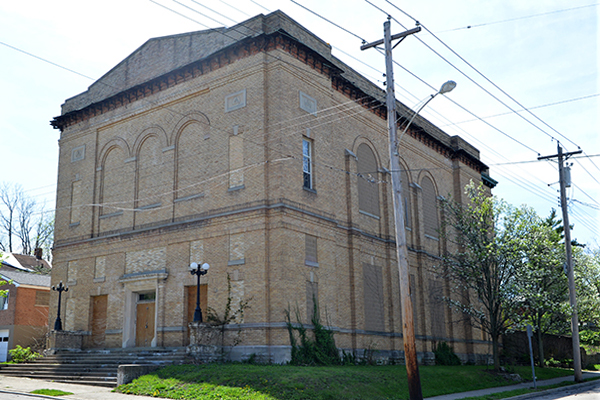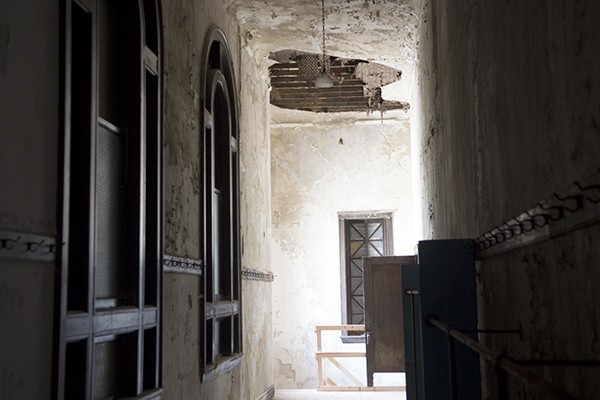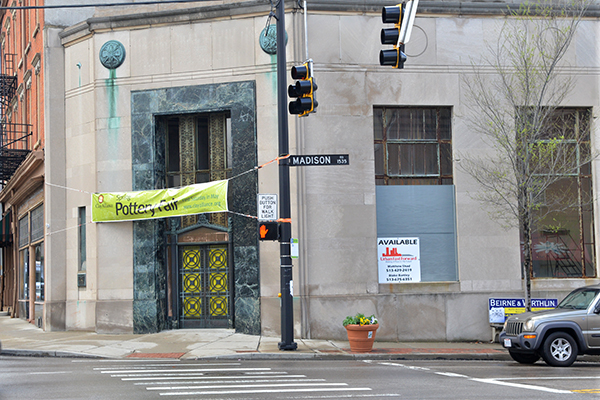Road to Redevelopment: Two nonprofits work to rehab neighborhood anchors
In the third installment of our series on key buildings coming back to life, we look at what two nonprofit development groups are doing to restore former neighborhood anchors in Price Hill and Walnut Hills.
This is the third installment of a Soapbox series focusing on building redevelopment. Follow writer Caitlin Koenig as she dives into Greater Cincinnati’s past and gives you a look at what older buildings are blossoming into. Part 1 is here, and Part 2 is here.
If you know of a rehabilitated space with a story to tell, contact us at feedback@soapboxmedia.com.
Masonic lodge, Price Hill
Price Hill Will, the driving force behind much of the redevelopment in its neighborhood, is looking on the former Masonic lodge at 3301 Price Ave. as its next high-profile project.
Built in 1912 by Hannaford & Sons, the lodge was one of the largest in Cincinnati. The Price Hill Free Masons owned the building for 77 years until they merged with the North Bend lodge in 1989. The building has been vacant since and was acquired by Price Hill Will in late 2014.
Because of its architectural significance and grandeur, the city has designated it as a historic building. Price Hill Will Executive Director Ken Smith says the nonprofit will be seeking recognition from the National Register of Historic Places as well.
The 12,000-square-foot, four-story building has two large auditoriums that are each two stories tall. Two floors of offices and a variety of other rooms surround each auditorium. Remnants of a collapsed stairwell are evident in the building’s front lobby, but the stained glass window on the fourth floor remains with the Masonic symbols intact.
Due to its historic designation, there is little that can be done to change the interior or exterior of the building, and the bones of the structure are still in good shape. Its layout will remain the same, Smith says, but an addition will be built onto the back. A number of structural repairs will be made to the lodge because it sat vacant for over 25 years.
Price Hill Will envisions the lodge as a community arts and events center. In a neighborhood of about 35,000, there is nowhere to hold large meetings and events.
“Right now, the community council meets in the cafeteria at Holy Family, and if there are events they’re held at Elder or Seton high schools,” Smith says. “There’s a real need in the community for a space that could accommodate meetings, wedding receptions and MYCincinnati, the youth orchestra program.”
MYCincinnati currently hosts concerts at Music Hall, but the orchestra doesn’t have a permanent home. When the lodge’s renovations are finished, the organization will practice for a few hours a day in one of the auditoriums. Price Hill Will has reached out to a number of other organizations about utilizing the building, but no one else has shown definite interest.
Smith is hoping that with time the building will fill up and there will be a variety of different events going on during any given week.
Price Hill Will is working with a number of partners on the project, including Schickel Design, which did the predevelopment and feasibility study; the Cincinnati Preservation Association, which will help put together tax credit applications; the City of Cincinnati; and LISC. Price Hill Will is still in the process of selecting an architectural firm to take on the renovation and construction project, and Smith is hopeful that construction can begin by the end of the year.
“This is an opportunity for the neighborhood to save a historically significant building and bring it back into use,” Smith says. “It’s a chance to take a negative and not just remove the negative but create a new positive. I can see the Masonic lodge becoming the center of the neighborhood and a focal point for activity.”
Bank building, Walnut Hills
Walnut Hills is home to several landmark buildings, including the Trevarren, which was built in 1895 and is being redeveloped into 30 apartments by the Model Group. Trevarren Flats will be completed by the end of the year, and Phase 2 will include the renovation of several of the buildings around it.
A number of the buildings in Walnut Hills that were constructed in the late 1800s were torn down to make way for more buildings in the 1920s and ’30s, but some still remain.
“Walnut Hills has a variety of diverse architectural styles,” says Thea Munchel, director of economic and real estate development at Walnut Hills Redevelopment Foundation. “A lot of the buildings from the late 1800s were torn down at the turn of the century. That has created layers and tells the neighborhood’s story.”
The old bank building at DeSales Corner on Madison Road between Victory Parkway and Woodburn Avenue was built in 1929. Before that year, Madison Road didn’t exist and buildings stood near where the bank is today. Those were demolished to make way for the street, but the bank remained.
Much of the bank’s Art Deco details remain intact. You enter through revolving doors, and you can still see the safe and clock as well as the ceiling sconces.
The space has always been a bank but has been vacant for almost 40 years. Walnut Hills Redevelopment Foundation Executive Director Kevin Wright says the space is slated to become a “destination” restaurant, but the owner, concept and developer remain under wraps. The construction start date is planned for the end of summer.
Public comfort station, Walnut Hills
Walnut Hills is also home to Cincinnati’s only remaining public bathroom, located at 793 E. McMillan St. Today it sits near the Five Points Biergarten and Fireside Pizza and will soon become a bar.
The one-story, 1,000-square-foot building was built after the 1890s and before the 1920s, but the date of its actual construction is unclear, as is how long it’s been vacant.
The limestone building still has the words “men” and “women” etched above the door as well as the phrase “Public Comfort Station.” Wright says he realized its potential as soon as he saw the building, and so did the future bar’s owner.
Other development efforts in Walnut Hills include a focus at Peeble’s Corner, which used to be a hub of activity in the neighborhood. Wright says there is much more to come in Walnut Hills, with new businesses like The Growler House and Myrtle’s Punch House joining the already established ones.
“Peeble’s Corner was developed as the second downtown,” Munchel says. “It was difficult to get downtown, but as transportation progressed it became easier. Walnut Hills then became a destination place, and it’s cool to be planning out the future life of the neighborhood.”
Speaking of the neighborhood’s future, read about three “Neighborhood Heroes” whose passion for Walnut Hills makes a difference in small but significant ways.



















